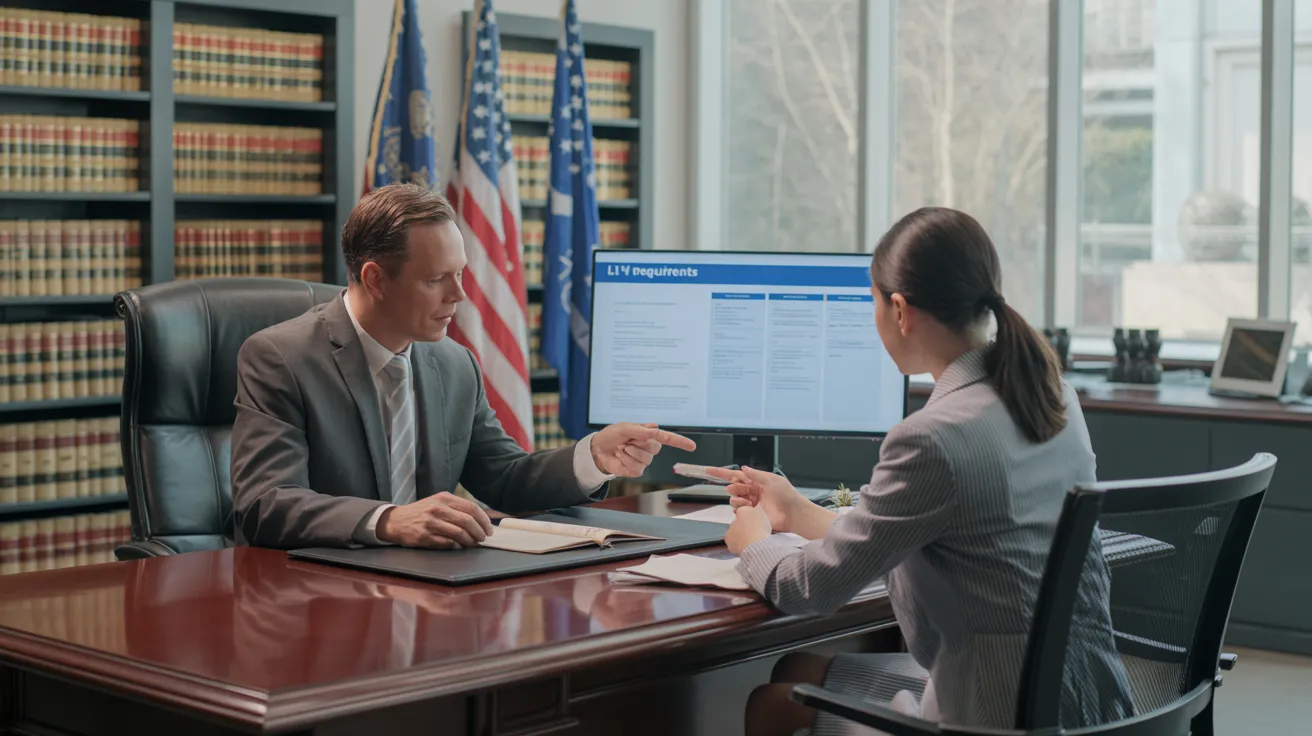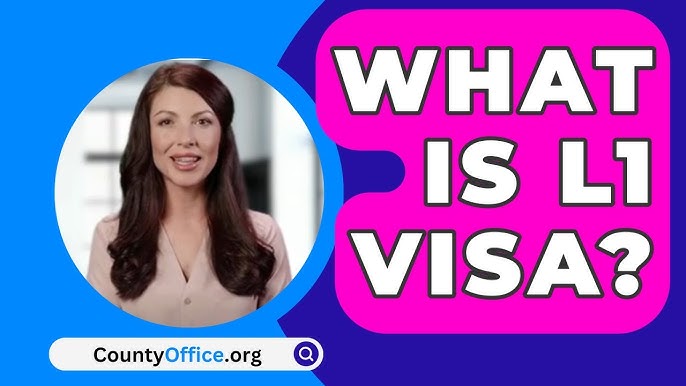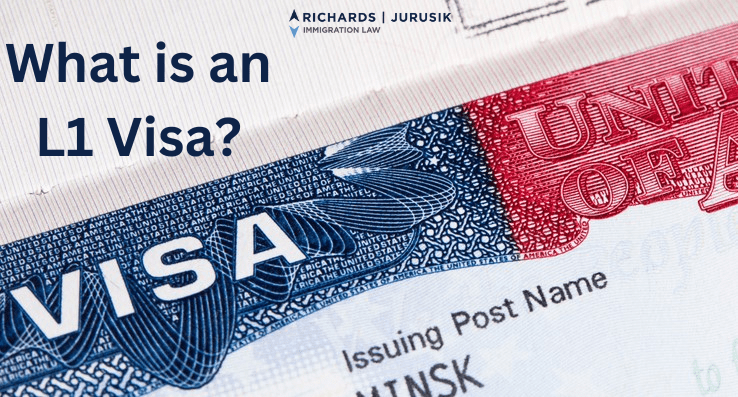Unlocking Opportunities: A Comprehensive Guide to the L1 Visa Process
The L1 visa process provides an essential pathway for international firms looking for to move crucial workers throughout borders. Recognizing the subtleties of qualification standards, the distinctions between L-1A and L-1B visas, and the intricacies of the application process can greatly affect an applicant's success. However, steering this complex landscape is not without its challenges, and careful interest to documentation and employer sponsorship is crucial. As we explore the vital parts of this procedure, the techniques for overcoming possible challenges will end up being noticeable, revealing just how informed preparation can open a globe of chances.
Recognizing the L1 Visa
Recognizing the L1 visa involves recognizing its significance as an essential tool for international business seeking to move proficient workers in between global workplaces. This non-immigrant visa classification promotes the movement of executives, supervisors, and specialized understanding workers to the United States, thus making it possible for organizations to preserve operational continuity and harness international skill effectively. The L1 visa is separated right into 2 primary classifications: L-1A for managers and executives, and L-1B for staff members having specialized knowledge.The L1 visa serves a crucial duty in boosting a firm's competitive side in the global market. By permitting firms to transfer their vital workers, services can guarantee that critical projects are handled by qualified people who are currently accustomed to the company's culture and operational procedures. L1 Visa Lawyer. This internal transfer device not just fosters knowledge sharing but also promotes technology and cooperation across borders.Moreover, the L1 visa is frequently favored for its reasonably simple application process contrasted to other visa groups, as it allows for double intent, permitting owners to go after permanent residency while on a temporary copyright. This function makes the L1 visa specifically appealing for both companies and staff members, as it streamlines the pathway for knowledgeable professionals to establish long-lasting residency in the United States
Qualification Standards
Eligibility for the L1 visa rests on several vital requirements that guarantee both the employee and the employer fulfill particular certifications. This non-immigrant visa is developed for multinational business to move employees from consular services to united state counterparts.Firstly, the company needs to be a certifying organization, which includes a moms and dad firm, branch, affiliate, or subsidiary of a united state business. The company should have been doing business for at the very least one year both in the united state and abroad. This guarantees that the business has enough operational stability and a legit presence.Secondly, the employee needs to hold a supervisory, exec, or specialized understanding placement. For L1A visas, the applicant should show supervisory or executive qualifications, while L1B visas concentrate on specialized knowledge pertaining to the organization's products, services, or processes. Additionally, the staff member has to have benefited the foreign entity for at the very least one continuous year within the last three years before their application.Lastly, the employee's role in the U.S. should align with their previous placement, guaranteeing that their skills and competence are leveraged for the company's advantage.

Sorts Of L1 Visas
The L1 visa group makes up two key types designed to promote the transfer of employees within international firms: the L1A visa for managers and execs, and the L1B visa for staff members with specialized understanding. Each kind serves unique functions and has details eligibility criteria.The L1A visa is tailored for people who hold managerial or executive settings within a company. This visa enables top-level employees to transfer to a united state branch, subsidiary, or associate of the same company. Applicants for the L1A visa should show that they have actually been employed in a managerial or executive ability for at the very least one constant year within the previous three years before their application. Furthermore, this visa supplies a longer duration of remain, initially approved for 3 years, with the opportunity of extensions for up to seven years.In contrast, the L1B visa is meant for professionals with specialized expertise pertaining to the business's products, services, or procedures. To qualify, applicants should verify that their know-how is crucial to the company which they have actually functioned for at least one continuous year within the last 3 years in a role that needed this specialized knowledge. The L1B visa is initially provided for three years, with extensions offered for approximately 5 years.Both visa kinds are essential for business looking for to boost their worldwide operations by leveraging proficient workers, consequently advertising innovation and efficiency within the U.S. market.
Application Process
Guiding with the L1 copyright procedure includes a number of essential actions that must be thoroughly followed to assure a successful end result. The process starts with the united state company, who have to initially establish qualification by demonstrating a qualifying connection with the international entity and confirming that the employee meets the certain needs for the L1 visa classification being sought.Once eligibility is verified, the company initiates the procedure by filing Type I-129, the Petition for a Nonimmigrant Worker, with the United State Citizenship and Migration Provider (USCIS) This type has to be gone along with by a thorough description of the job responsibilities to be performed, the business framework of both the united state and international entities, and the employee's qualifications. It's essential to validate that all details is accurate and total, as noninclusions or inaccuracies can lead to hold-ups or denials.Upon approval of the I-129 petition, the following step entails the staff member obtaining the L1 visa at a united state embassy or consular office in their home country. This phase calls for the conclusion of Kind DS-160, the Online Nonimmigrant copyright, and arranging an interview. Throughout the interview, the applicant should provide proof supporting their credentials and the employer's petition.After the visa is provided, the staff member can go into the United States to function in the marked function. On the whole, cautious preparation and adherence to each step of the application process are necessary for an effective L1 visa outcome.
Called for Documents

Important Forms Required
Navigating the L1 Visa procedure requires cautious attention to the crucial forms and documents necessary for an effective application. The main form needed is the Type I-129, Petition for a Nonimmigrant Worker, which must be finished and submitted by the united state company (L1 Visa). This form lays out the information of the work deal and the qualifications of the employee seeking the L1 Visa.Alongside Kind I-129, the candidate will require to total Form I-539 if going along with family members are also getting visas. In addition, the company needs to offer evidence of the certifying relationship in between the united state entity and the international entity, typically demanding the entry of business records such as articles of incorporation or financial statements.Moreover, it is important to consist of the L Category Supplement to Form I-129, which defines the sort of L Visa being asked for-- either L-1A for managers and execs or L-1B for employees with specialized understanding. Ultimately, candidates need to ensure that all forms are authorized and dated suitably, as insufficient submissions can lead to delays or rejections. Effectively assembling these essential kinds lays the foundation for a smoother L1 copyright process
Sustaining Evidence Requirements
Supporting documentation is crucial for an effective L1 copyright, as it validates the claims made in the petition. Applicants should give an array of files to show qualification for the visa, which is categorized into two primary L1 copyright copyright types: proof of the qualifying relationship in between the united state and international entities and evidence of the candidate's qualifications.To establish the relationship, applicants should send documentation such as corporate business charts, financial statements, and proof of ownership. These files confirm that the foreign company has a certifying connection with the U.S. company, whether as a parent business, subsidiary, branch, or affiliate.For the applicant's qualifications, necessary documents consist of a thorough employment letter from the international employer, detailing the candidate's task title, obligations, and period of work. In addition, educational credentials, such as levels and diplomas, need to be given to confirm the candidate's competence in the appropriate area.
Employer Sponsorship Records
Employer sponsorship records play a crucial function in the L1 copyright process, as they confirm the united state company's dedication to the candidate's employment in the United States. These documents are important for demonstrating the employer's eligibility to sponsor the candidate for the L1 Visa.Key papers usually required include a comprehensive work letter from the U.S. company, which outlines the task title, responsibilities, and the nature of the employment relationship. Additionally, the company should provide proof of the firm's authenticity, such as company licenses, tax returns, and organizational charts, highlighting the partnership in between the U.S. entity and the foreign company.Furthermore, proof of the worker's certifying connection with the foreign business is needed. This may consist of documents confirming the worker's role in the foreign entity, such as pay stubs, employment agreement, or efficiency assessments.
Typical Difficulties
Maneuvering the L1 visa procedure presents a number of typical obstacles that candidates should know (What Is L1 Visa). Key problems often consist of rigid documents requirements, possible delays in processing times, and the need for rigorous legal conformity. Comprehending these challenges can assist candidates better prepare and reduce threats during their copyright journey
Documents Requirements
The L1 copyright procedure often provides considerable obstacles associated to documents needs. Applicants need to give comprehensive documentation to establish eligibility, which can result in complication and potential delays. Trick documents consist of proof of a qualifying relationship in between the U.S. and foreign company, proof of the candidate's work history, and in-depth information concerning the job role in the U.S.One usual challenge is gathering sufficient evidence to demonstrate the nature of the certifying partnership. Firms often struggle to present clear business graphes or monetary statements that highlight the link in between the entities. Furthermore, ensuring that letters of assistance from companies properly mirror the applicant's work obligations and credentials is necessary, as unclear summaries can cause denials.Another issue develops from the requirement for detailed work summaries that align with the L1 visa categories. Candidates should express not just their existing duty however likewise their supervisory or specific expertise duties clearly. This requires a comprehensive understanding of both the applicant's setting and the regulative language utilized in L1 applications.
Processing Dead Time
Experiencing delays in handling times is a common challenge faced by L1 visa applicants, usually resulting in irritation and unpredictability. Numerous elements contribute to these hold-ups, consisting of high application volumes, boosted examination of applications, and administrative backlogs within the U.S. Citizenship and Immigration Provider (USCIS) Candidates might find that processing times can vary considerably depending on the service facility managing their application, as each facility has its own workload and performance levels. Additionally, the intricacy of the candidate's case, such as the need for extensive paperwork or clarification, can better prolong wait times.In some circumstances, concerns connected to the candidate's existing immigration status or previous visa background might additionally result in extra delays, as USCIS may require additional evaluation or info. It is vital for prospects to stay proactive throughout this duration, preserving open interaction with their companies and lawful reps to deal with any type of prospective worries promptly.Understanding these processing time challenges can aid L1 visa candidates get ready for possible delays and reduce the effect on their change and occupation plans. Perseverance and persistance are vital virtues in maneuvering this complex procedure.
Lawful Conformity Issues
Numerous L1 visa candidates run into legal compliance problems that can complicate their trip towards obtaining the visa. Recognizing and adhering to the specific laws set by the U.S. Citizenship and Migration Provider (USCIS) is vital. Usual difficulties include showing the certifying connection in between the international and united state employers, as well as proving that the applicant has the requisite customized knowledge or managerial capacity.Additionally, candidates should give thorough documents outlining their work obligations, business structure, and monetary practicality of the united state entity. Poor or unreliable paperwork can result in hold-ups or even rejections. Employers need to also ensure that they abide by labor legislations, including wage and working condition requirements, which can influence visa eligibility.Another usual concern includes maintaining compliance with the regards to the visa as soon as granted. Changes in work status, work duties, or business structure can demand modifications to the visa, which if not attended to promptly can lead to legal problems. Therefore, remaining notified regarding compliance demands and seeking legal guidance when required is necessary to navigate the complexities of the L1 visa process efficiently.
Tips for Success
Success in the L1 copyright process typically rests on meticulous preparation and interest to information. To enhance your chances of authorization, start by completely comprehending the qualification demands for both the L1A and L1B visa categories. Assess whether your placement at the business certifies as managerial, exec, or specialized understanding, as this categorization notably impacts your application.Next, collect extensive documents that corroborates your cases. This includes business graphes, thorough job descriptions, and evidence of the firm's operational structure. Clear and concise proof of the qualifying relationship in between the U.S. entity and the international entity is vital. Validate that all papers are organized rationally and presented in a professional fashion, as this shows your dedication and seriousness regarding the application.Engage the solutions of an experienced migration lawyer who focuses on L1 visas. Their knowledge can show invaluable, guiding you with complex laws and guaranteeing that all documents follows present regulations. Additionally, prepare for the meeting by exercising response to usual concerns and being ready to discuss your role and contributions to the company in depth.
Regularly Asked Inquiries
Can Family Members Come With the L1 Visa Owner?
Yes, member of the family of L1 visa owners, including spouses and single youngsters under 21, can accompany the main visa holder. They may likewise get L2 visas, which permit them to reside in the United States.
Exactly How Long Can I Keep on an L1 Visa?
The L1 visa allows preliminary stays of approximately three years, with the possibility of extension. L1A visa owners may stay for a maximum of seven years, while L1B visa holders can remain for 5 years.
Can L1 Visa Holders Use for an Environment-friendly Card?
Yes, L1 visa owners can request a permit. They may pursue permanent residency through employment-based categories, normally needing sponsorship from their company, offered they fulfill the needed qualifications and documentation demands.
What Happens if My L1 copyright Is Refuted?
If your L1 copyright is rejected, you might get a notification describing the factors for rejection. You can seek to appeal the choice, reapply, or discover alternative visa choices based upon your scenarios.
Exist Any Type Of Travel Restrictions With an L1 Visa?
An L1 visa typically permits global travel; however, re-entry to the U.S. L1 Visa Requirements. rests upon keeping valid standing. Travelers must assure compliance with visa conditions to avoid complications upon return
Final thought
